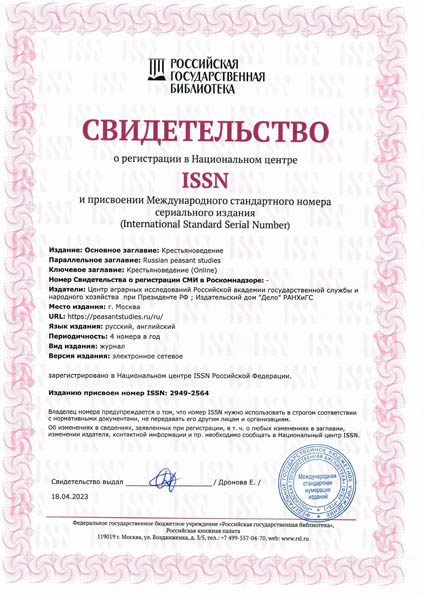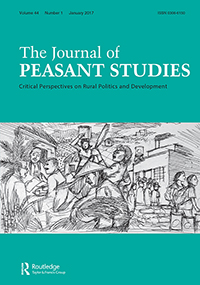Shagaida N. I. Is it possible to quickly eliminate labor shortage in Russian agriculture? // The Russian Peasant Studies. 2024. V.9. №2. P. 139-152.
DOI: 10.22394/2500-1809-2024-9-2-139-152
Annotation
In November 2023, the First Deputy Minister of Agriculture Oksana Lut estimated the shortage of workers in agriculture at 200,0001, obviously implying agricultural organizations. According to Lut, one of the reasons for such a shortage is low salaries: the limited effective demand for products does not allow agricultural organizations to increase the selling price of produce, which limits the wages of agricultural workers. However, the number of people employed in agriculture declines almost everywhere — this is a common situation in many countries. On the one hand, this decline is determined by an increase in labor productivity, i.e., a reduction in the number of workers is the desired result; on the other hand, many agricultural enterprises suffer from the lack of needed workers. Therefore, it is necessary to understand why there is a shortage of agricultural workers in Russia, focusing on the details of this situation. Based on the Federal State Statistics Service’s data, the author considers this situation, in particular the number of employed in agriculture, main reasons for such a labor shortage in agriculture and national economy in general, possibilities and limitations of the reliance/ dependence on labor migrants (especially from the post-Soviet countries) and on unemployed in the Russian labor market, regional differences in the available workforce, finally providing some recommendations to change the current situation.
Keywords
Labor shortage, agriculture, agricultural organizations, wages, unemployment, labor migrants, regional differences.
About the author
Shagaida Natalia I., DSc (Economics), Head of the Center for Agro-Food Policy, Russian Presidential Academy of National Economy and Public Administration. Vernadskogo Prosp, 82, Moscow, 119571.
E-mail: This email address is being protected from spambots. You need JavaScript enabled to view it.
The article was submitted on 22.02.2024.






















